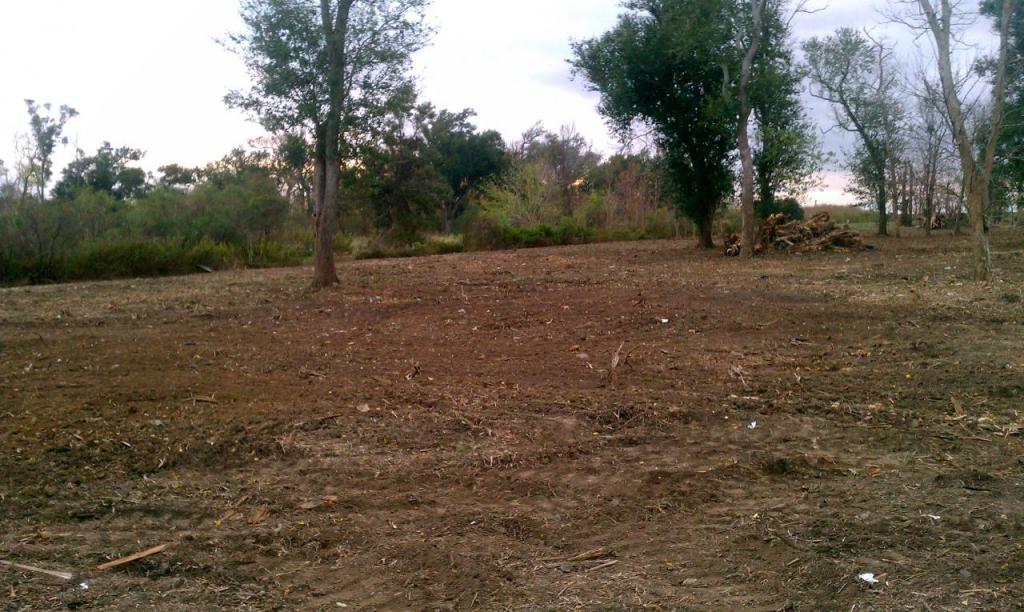On the territory of the Russian Federation, as a result of the reform, redistribution of land between enterprises of different ownership forms and land fund categories took place. Land turnover involves the implementation of an impressive amount of cadastral work on the formation of new land plots and clarification of land limits already existing. In this article, we consider the concept and methods of forming land plots. In addition, we touch on other important aspects of this topic.
General Provisions

Before studying the methods and conditions for the formation of land, it is advisable to analyze the current situation in Russia. So, as a result of the reform, more than 40 million Russians received plots of land, among them - 12 million equity holders. It is worth noting that the total number of isolated areas is 100 million. Today, the land market in the Russian Federation is formed primarily in the field of transfer of municipal and state lands for rent. It should be noted that in 2007, 4519093 land plots were in circulation, taking into account the current lease agreements for municipal and state areas. The total area of this space was 115843.9 thousand hectares.
Transactions on the land market are carried out in two sectors: transactions with land that is privately owned, and transactions with land that is in municipal or state ownership. It should be noted that in 2007 the country as a whole sold 233,706 municipal and state plots of land with an area of 369.4 thousand hectares.
Land plot

Before analyzing the methods of forming land plots, it is advisable to study the category of land and its basic properties. Under the land should be understood as part of the earth's surface, the limits of which are determined by federal laws. It is important to note the following features:
- Turnover, in other words, the ability to freely transfer from one person to another or alienate in accordance with article 129 of the Civil Code of the Russian Federation.
- A land plot is real estate.
- Plots of land may be divisible or indivisible.
The procedure and methods for the formation of land
To consider the application for the formation of the site in 2018, it is necessary to identify the boundaries of a separate site. After that, it is necessary to add them to the cadastre of national importance. The procedure in accordance with the existing methods of forming land plots is possible in the following cases:
- Primary formation. In other words, subject to previously unrestricted land.
- Formation with such methods of forming land plots as association, division, allotment or redistribution. It is worth noting that we are talking about those plots of land that are already existing.
Currently, it is often the land formed and drawn up according to the relevant documents does not have certain boundaries. However, for introducing an object into the cadastral register of national importance, one way or another, it is necessary to identify the boundaries that are carried out by the cadastral engineer, and their subsequent inclusion in the system.
Land formation: concept and methods

If the land plot is municipal or state property, it is formed on the basis of a decision of the executive structures of state power or structures of local self-government. The following cases are an exception:
- Section of land plots that are provided for gardening, gardening, summer cottage associations, as well as for plots that are given to Russians on the basis of unlimited (permanent) use and lifetime inheritable property.
- The formation of land in a manner involving the formation of new sites from those that are provided for integrated development. The main goal in this case is housing.
- Redistribution of land under article 11 of the Land Code of the Russian Federation.
- Formation of a new land plot in a manner that involves taking as a basis the areas that are within the built-up territories. In this case, the urban planning code should make a decision regarding the development of space.
Site formation application

To date, four methods of forming land plots as real estate objects are known. It is worth noting that the decision regarding the formation of plots that are in municipal or state ownership can be made on the basis of a statement by their owners (copyright holders). So, the following documents must be attached to the application:
- Legal certification or title documentation on the area from which the formation of the new site is planned.
- Cadastral passport of the formed site.
- Territory planning documentation or other document provided for by federal law, if necessary.
If the plots are in municipal or state ownership
Consider the methods and requirements for the formation of land from those that are in municipal or state ownership. It is worth noting that the formation of such plots of land is implemented on the basis of decisions of executive structures of state power or structures of local self-government. This provision is provided for in Article 29 of the Land Code in force on the territory of the Russian Federation. It should be noted that the decision regarding the formation of any of the above land plots (Chapter 4) can be taken at the request of land users, tenants of land, landowners. It should contain:
- Details of documents of title (title) to land plots, from which, in the event of a merger or division, new land plots are formed (if such documents are available).
- Information about the land plots from which new or new ones are formed in the event of a merger or division, including information about the owners of these plots, rights, permitted use, purpose, as well as cadastral numbers of both the original land plots and the land plots formed (if any) )
- In addition, the decision regarding the formation of land plots may indicate the powers of their respective owners.
Section of land

When analyzing the methods of land formation and their brief characteristics, it is advisable to start with the division of the land. So, in this case, the formation of several limited spaces is relevant. The original site ceases to exist. The exceptions are cases that are indicated in the 4th chapter of this article, as well as cases that are provided for by other laws of the federal level. In the process of dividing a plot of land, its owner gains ownership of all the resulting spaces. When dividing the land that is in common ownership, all participants retain the corresponding ownership right to the formed areas as a result of the presented method and conditions for the formation of land, unless otherwise specified by the participants through a special agreement.
It is worth noting that the division of the land that is provided to the non-profit type gardening, horticultural or summer cottage association is implemented according to the project of organization and further development of the territory of this non-profit association or according to other documentation provided for by the current law. In the event of the division of such a plot of land, one or a number of spaces may be formed that are intended for the citizens to carry out gardening, horticulture or summer cottage construction. In this case, the land that has been divided is maintained in accordance with the changed boundaries.
Studying such a method of forming land plots according to the Land Code as a section, it is advisable to touch on the plots that are provided for integrated development. The main goal here is housing. This section is implemented by the person with whom the land plot lease agreement has been signed for integrated development in accordance with the project of land surveying, approved in the manner prescribed by the current law regarding urban development.
Allocation of land
The composition of the methods of land formation also includes a selection. This operation is carried out when one or several shares are allocated from a piece of land that is in shared ownership. It is worth noting that in this case one or a number of land plots are formed. The original site is maintained in accordance with the changed boundaries.
When allocating a plot of land, a shareholder, at the request of which the operation is carried out, shall be awarded the right of ownership to the formed plot of land. It is important to add that other persons participating in shared ownership retain the corresponding right to a changed plot of land. At the same time, new sizes of shares in the right of ownership are taken into account. The main features of this method of forming land plots are summarized in the Federal Legislative Act "On the Turnover of Agricultural Land".
Association of land

In the case of combining adjacent plots of land, one is formed, and the existence of the original is considered to be terminated. It should be borne in mind that currently unacceptable is the unification of land plots that are represented on the right:
- Unlimited (permanent) use.
- Urgent use on free terms.
- Lifetime inherited property.
An exception is cases when all of the indicated plots of land are granted on the right of unlimited (permanent) use, the right to urgent use on gratuitous terms, or the right of lifetime inheritable property to one person. It is worth adding that today it is permissible to combine land plots encumbered with pledges with those that are not encumbered with these pledges. In this case, the right of pledge will apply to the entire land plot formed as a result of the transaction, unless otherwise provided by the relevant agreement of the parties.
Redistribution of land

And finally, we examine the issue of redistribution of land. This method of forming new areas is final and less common in practice than the other methods mentioned above. So, in the case of redistribution of several plots of land of an adjacent nature, the formation of a number of other plots of an adjacent type is relevant. It is important to note that the existence of the first spaces in any case ceases. The redistribution of those sites that are in municipal or state ownership between their owners (it does not matter whether they are individuals or legal entities) is unacceptable. The following cases are an exception:
- Redistribution of land within the built-up area.As a rule, in relation to this space, a decision is made regarding its development in accordance with the Town Planning Code in force on the territory of the Russian Federation.
- Formation of new plots of land to accommodate facilities for capital construction.
It is necessary to add that the procedure for the emergence of rights to formed land plots is established by civil law (namely, chapter five of the Land Code, the legislative act "On the enactment of the land code" and the legislative act "On country amnesty"). Depending on the target nature of the provision of land and the types of entities to which they are provided, an appropriate procedure is established. So, the following goals are distinguished:
- Construction of residential or non-residential buildings (houses, office buildings, industrial premises).
- Goals not related to the construction of residential or non-residential buildings.
- Re-registration of land rights that appeared before the Land Code came into effect.
Among the reasons for the emergence of rights to land plots with respect to legal (organizations) and individuals it is important to highlight the presence of acts of state structures or local self-government structures regarding the provision of land plots that are in municipal or state ownership; agreements related to transactions on land plots; relevant court decisions; documents defined by the legislative act "On Country Amnesty". In addition, the occurrence of these rights may be relevant by inheritance on a legislative basis or by will. It is worth knowing that the listed documentation refers to the title.
The right to a plot of land appears, as a rule, from a number of grounds. So, after receiving title papers, it is necessary to go through cadastral state registration and implement the registration of the corresponding right. You need to know that the right to own a plot of land arises immediately after its state registration. Certificate of registration is title paper.
